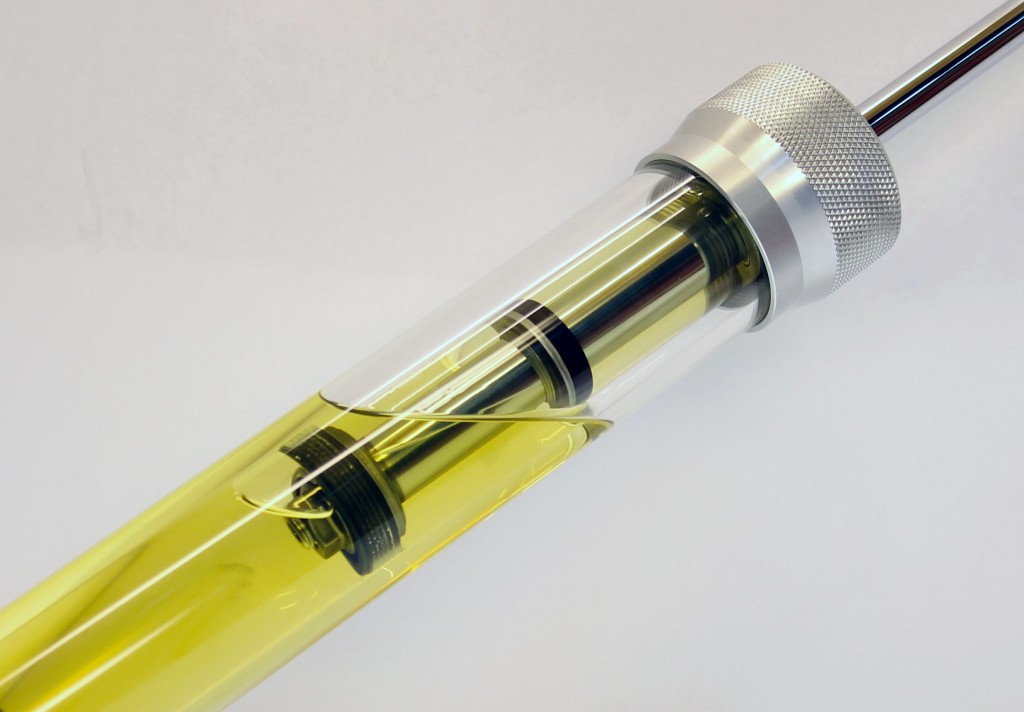“Hey, I bought some new shocks from you, but one of them doesn’t seem to work.”
“This new shock only has hydraulic action in one direction.”
These are common concerns the shock experts at KYB hear from customers after they buy new shocks. According to the KYB guys, it can take some convincing to assure the customers there’s nothing wrong with the new shock. The truth is the shock has probably been just “laying around” too long.
Here’s the deal:
More than 85 percent of all vehicles are equipped with twin tube style shocks and struts. Twin tubes have an open space inside so that the hydraulic fluid has someplace to go during operation. That space is pressurized with nitrogen gas to reduce foaming as the fluid is agitated.
Since there’s a top and bottom to these shocks, they’re designed to work vertically. During shipment, or while the new part is lying sideways on an inventory shelf, the nitrogen gas within the shock will have a tendency to push its way into the hydraulic working area. When that happens, the first few strokes are going to feel like the shock isn’t working.
The fix is simple. As the new shock is exercised, the nitrogen gas will be pushed back into the reservoir and the hydraulic fluid will stay where it belongs as long as it continues to stay vertical.
 Although not required, the shock can be “primed” before installation: Hold the shock vertical (normal installation position) and then stroke the shock to fully compress it and then fully extended it several times.
Although not required, the shock can be “primed” before installation: Hold the shock vertical (normal installation position) and then stroke the shock to fully compress it and then fully extended it several times.
The first movement or two may feel like the shock isn’t working due to its low nitrogen gas pressure that sometimes seeps into the hydraulic area during extended horizontal storage. If this procedure is not performed prior to installation, noisy operation and loss of performance can occur for a short time. The shock however, will begin working normally after several strokes or as the vehicle begins driving.
Again, shock priming is not required, but it’s quick and easy and can help reduce any “break-in period” for your new shocks.


Next Time Buy “Gas Shocks”!
Kyb is terrible in my opinion
Wont buy again
No Rebound for my 2012 elantra gls touring
Unstable rear end is an issue because this Shock is soft
I agree absolutely, I had heard many people hype KYB, I think I got a set of lemons, my Town Car bounces up and down on the interstate like the shocks don’t even exist.
Like anything that’s mass produced, it’s probably hit-and-miss.
…
I installed a set of Nissan’s NISMO S-Tune coilovers on my daily driver and they worked flawlessly for a decade. When I took ’em apart to re-use the springs, sure enough, the dampers were made by KYB.
I have used KYB struts exclusively since they came equipped on my 2001 Subaru Forester (I had it for twenty years. Two sets not counting the originals) with no problems at all. I am now putting a set of Excell-G Shocks on my 2007 Ford Ranger pick up. From past experience, I am not expecting any problems. If there is, you will be the first to hear it.
Wow same issue here Shane Clark on my Nissan Wingroad Y12.
Put KYB all around on my 1992 F150.
Huge difference. Fantastic performance. I firmly believe in KYB. Possibly the bad experiences are due to the wrong p/n being installed.
All Kyb shocks are mono tube and the oil and gas are separate and don’t mix so this really doesn’t make sense
Tom Allen. 2015 Rav4, put new struts, new shocks on car. It rides hard , hits bump hard . No absorption over the old 140,000 mile shocks.
This has been the best explanation that I could find anywhere on the internet. Thanks